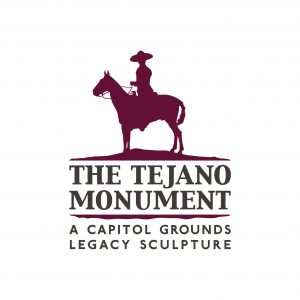500 Years In The Making: The Tejano Monument
On Jan. 13, workers finally broke ground on the Texas Capitol site where a 525-square-foot statuary honoring the legacy of Tejanos, or Texans of Mexican and Spanish descent, will be dedicated March 29. Though the monument is the result of a grassroots effort that began in 2001, the official recognition of Tejanos in this state has taken much longer.
“[N]early 500 years after the mapping of the Texas coast by Alonzo Alvarez de Pineda in 1519, and 175 years after Tejanos José Francisco Ruiz, José Antonio Navarro and Lorenzo de Zavala signed the Texas Declaration of Independence in 1836, the Tejano culture and its contributions to Texas’ evolution are being officially recognized by the state,” Renato Ramirez, vice president of the Tejano Monument Board, wrote in a December article published on the Latino news site NewsTaco.
For the monument to become a reality at this point in history seems almost fated. It’s 2012, an election year, and the first one since the 2010 census let the world know that the future of Texas officially lies with Latinos. Now the world will know that Texas’ past lies with Latinos, too.
Most historians agree that the story of Texas taught in schools, beginning in the 1830s and portraying Anglo-Americans as the state’s first settlers, leaves out a lot. If I had a dollar for every person in New York City who’s asked me where in Mexico my family hails from, I’d be one rich Tejana. In Virginia, my fellow graduate students had no idea most cowboy words are Spanish. They thought white Texans had invented the industry.
“In 1830,” Ramirez said during a recent appearance on a San Antonio radio show, “the Davy Crocketts and Jim Bowies and those guys … they came in illegally and, seven days after they came in illegally, they earned the right to be called Texans. I have not earned that right after 500 years of my family being here. I’m still a Mexican. I want to make it clear that I’m a Tejano.”
In reality, 1,000 Tejanos died fighting for independence from Mexico at the Battle of Medina in 1813. Twenty-five years later, 188 Anglo-Americans died at the Alamo. Though the Alamo is perhaps the state’s most cherished historical treasure, to this day we don’t know the exact location of the Battle of Medina. In 2001, when a McAllen physician named Cayetano Barrera visited the Texas Capitol, he realized that, of the 18 monuments on the grounds, not one portrayed Tejanos in a positive light.
Barrera returned to McAllen and enlisted a group of educators and businesspeople to campaign for a monument.
The group, now a nonprofit called Tejano Monument Inc., had to push three bills through the Texas Legislature to get the monument on the south lawn—the front yard—of the Capitol grounds. “The first comment was that the contribution of Hispanics does not merit being on the south lawn,” Ramirez recalls.
So, in 2001, while lawmakers agreed there should be a Tejano monument, its location had yet to be determined. Six years later, in 2007, the state agreed to contribute $1 million to the project’s estimated $1.8 million cost. The other $800,000 was raised through private donations.
Then, in 2009, the 81st Legislature passed House Bill 4114 by Trey Martinez-Fischer, D-San Antonio, authorizing placement of the Tejano Monument on the Historic South Grounds—the coveted front lawn. Gov. Rick Perry later signed the bill.
Twelve pieces by Laredo sculptor Armando Hinojosa will tell the Tejano story from the 1500s to the 1800s. That depth of history and context is more important now than ever, given that Mexican-American history is elsewhere being literally removed from the classroom. The same week that ground was broken on Texas’ Tejano Monument, Arizona’s state superintendent of education, utilizing power granted him by a controversial new state law, ordered public schools in Tucson to stop offering Mexican-American Studies classes.
In contrast, at the Tejano Monument groundbreaking in Austin, the Walmart Foundation announced its $100,000 donation toward a one-year curriculum-development project to improve the understanding of Tejano history in elementary schools. The curriculum is being developed by University of Texas professors and will start in Austin schools, with the hope that it will be replicated statewide.
For Latinos in Texas, there’s a lot to be hopeful for this year.
[Photo By www.tejanomonument.com]

